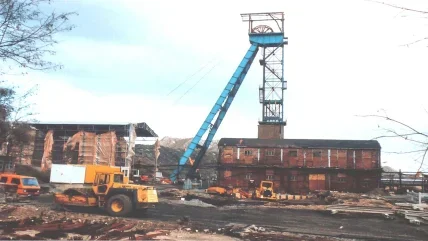
The company has been contracted by mine owners Geiger Group to investigate one of the decommissioned shafts of the Grube Teutschenthal mine, situated near Halle, about 150 km southwest of Berlin.
The 760 meter deep mine was used originally for the production of potash and rock salt. Geiger Group is now using the mine as a long-term waste disposal facility, employing deep underground cavities to offer environmentally sound disposal of mineral waste, especially from thermal energy plants and industry.
It is one of the most modern sites of its kind and is an important waste disposal facility in Central Germany.
“Geiger Group is planning to use green energy to power existing operations at the site, and optimising our electricity supply through gravity energy storage could open up additional benefits for our own operation as well as for the public grid,” said Markus Mannel, MD of Grube Teutschenthal.
The Gravitricity study will look initially at the technical and commercial feasibility of using the so called “Saale shaft” to optimise the supply and demand of green energy.
Work will commence in May. If this initial phase of the study proves positive, Gravitricity will then deliver a concept design and project development plan, offering Geiger Group the option to consider constructing a full-scale gravity energy storage plant.
Charlie Blair, MD of Gravitricity said his company was “now having conversations with mine owners worldwide seeking to explore opportunities to develop first-of-a-kind schemes.”
In February, Gravitricity signed a memorandum with DIAMO, the Czech state enterprise charged with mitigating the consequences of coal mining in the republic, committing the two parties to work in tandem to seek EU funds to turn a decommissioned mine into a 4 MW/2 MWh energy store.
Worldwide, Gravitricity estimates there are around 14 000 mines which could be suitable for gravity energy storage.






